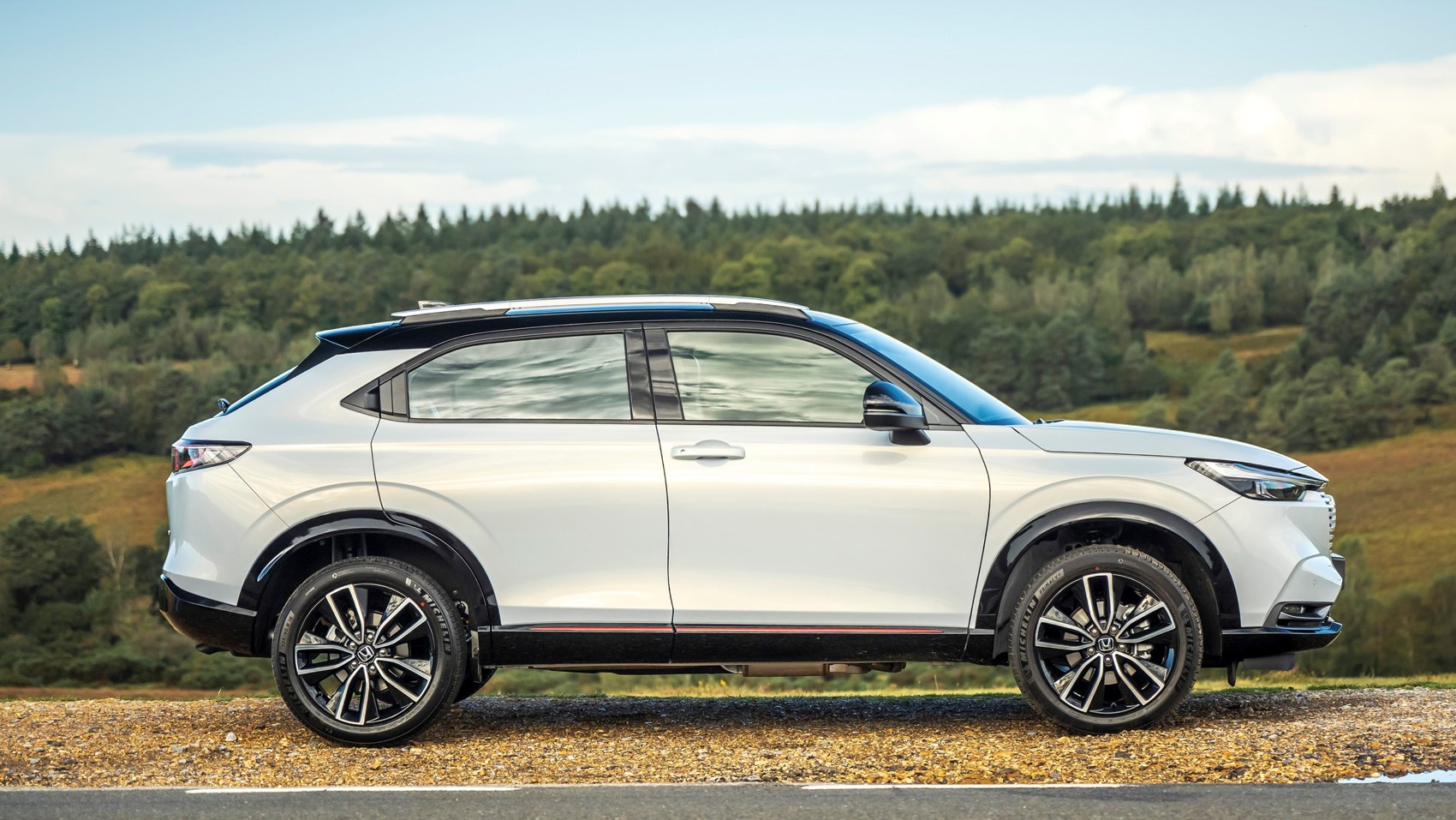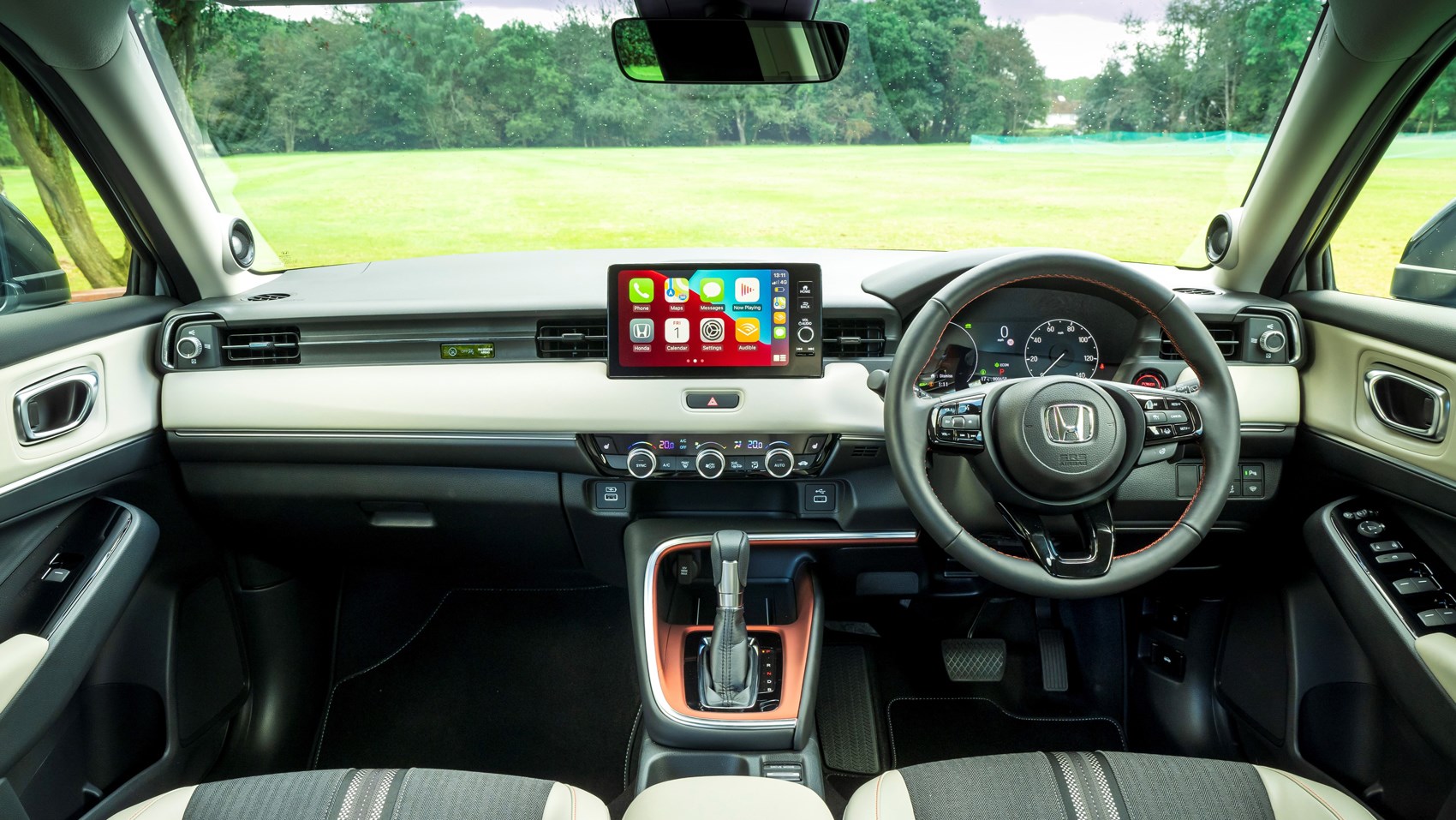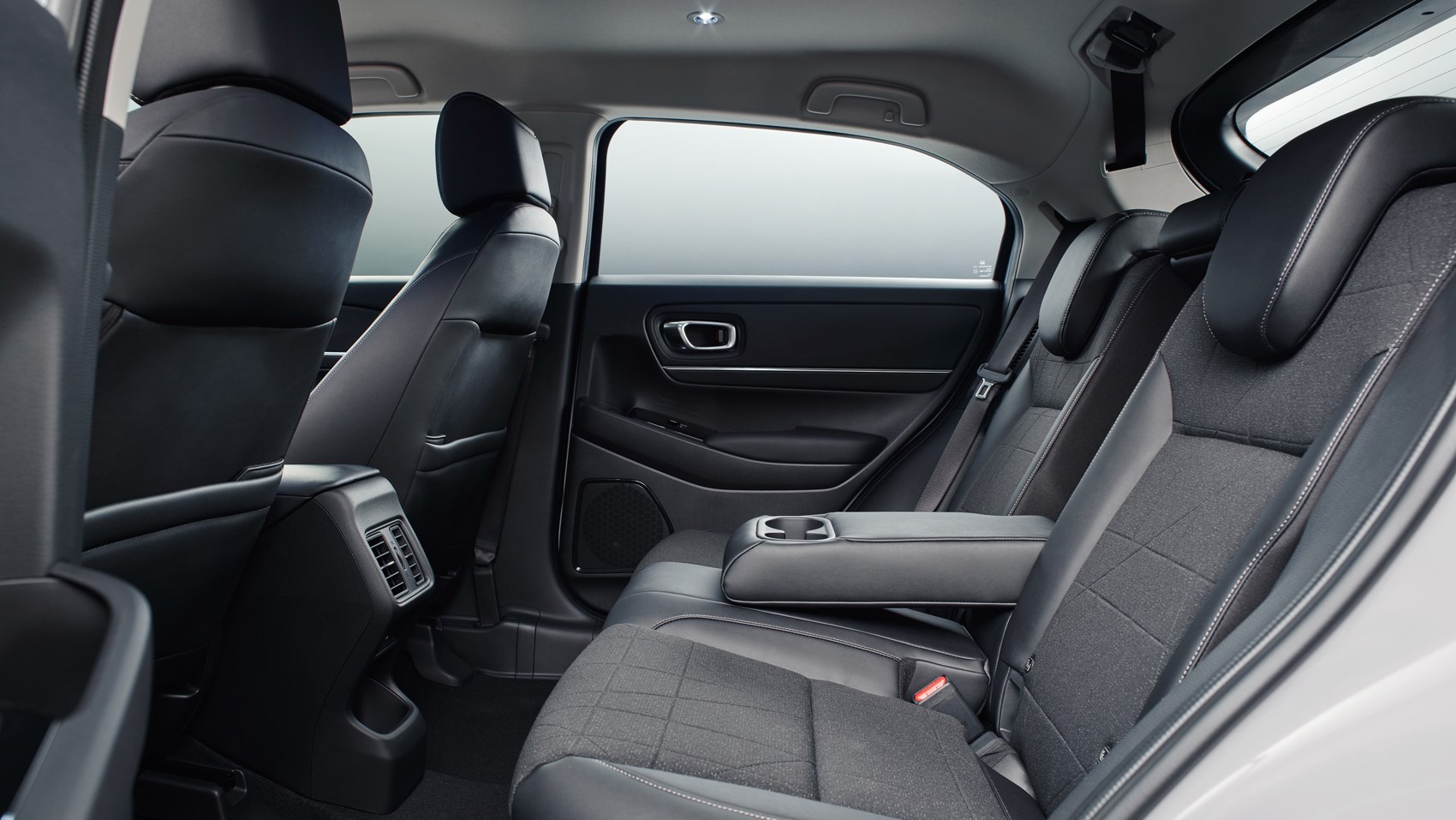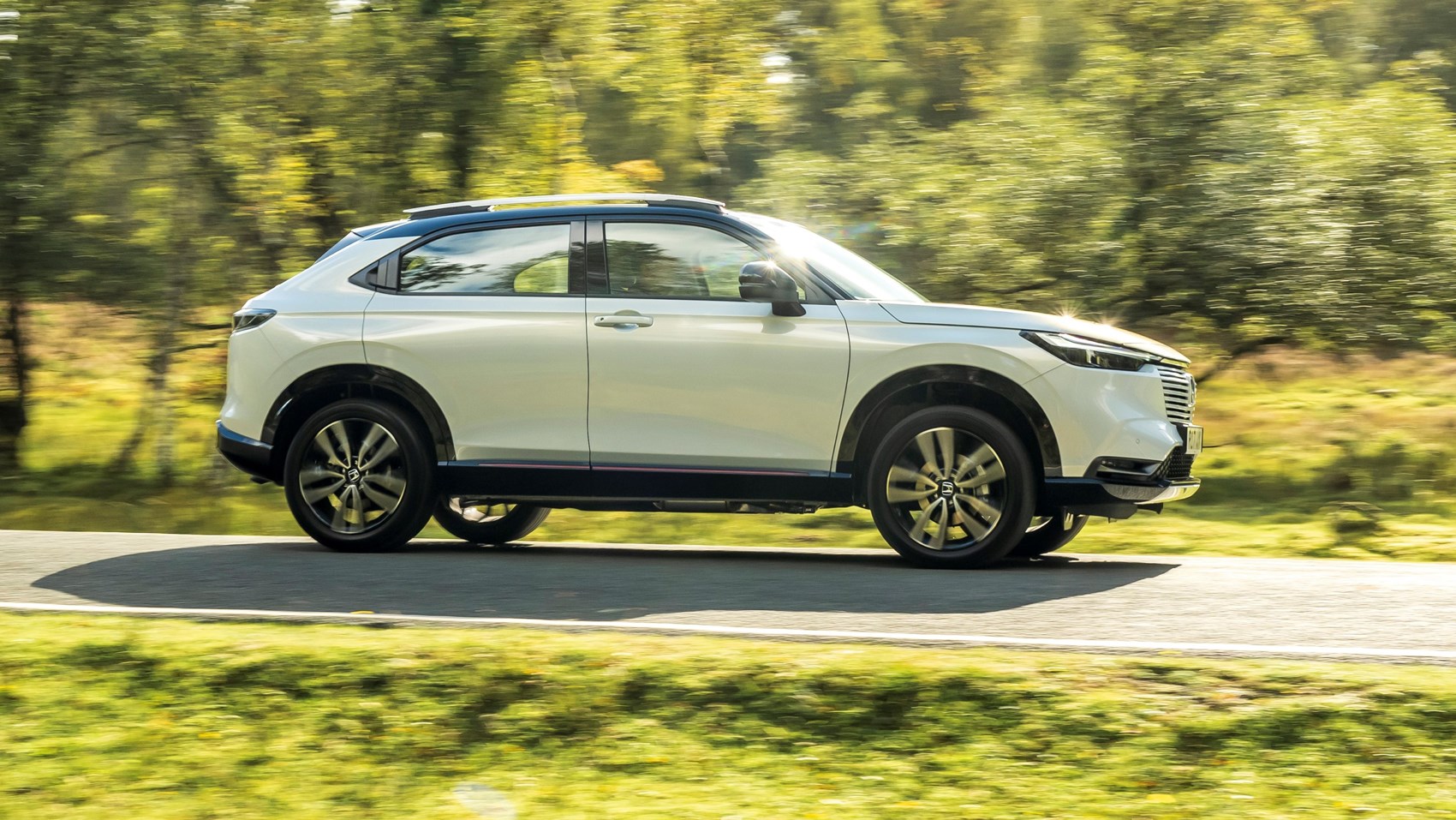► Hybrid-only new HR-V driven in the UK
► Practical touches, sweet chassis
► But is that enough?
Remember the HR-V? We’d forgive you if you hadn’t. The last one did okay but didn’t really tap into the crossover boom in Europe. Honda is desperate to change that with the all-new HR-V.
So, what are its USPs? A proper hybrid powertrain, mainly (rare to find in a baby crossover) and practicality over almost everything else. So has Honda succeeded?
Is it hybrid only?
Yes, and it’s essentially a mildly more powerful version of the hybrid powertrain seen in the Jazz supermini, comprising a 1.5-litre naturally-aspirated petrol engine, a CVT, a lithium-ion battery and two e-motors. The on-paper stats don’t scream excitement: 129bhp, 10.6sec 0-62mph (making it slower than the Jazz with almost the same powertrain) but that’s not the point.

It works differently to other conventional hybrids by doing away with a planetary gearbox (which is a setup Toyota and Lexus uses), which Honda claims improves efficiency from the powertrain. It also means that, for the most part, the HR-V feels like it’s driving on e-power, with all the throttle responsiveness and silent running that entails.
What do you get for your money?
In the UK, there are three HR-V trims: Elegance (from £26,960), Advance (from £29,210) and Advance Style (from £31,660). Every HR-V has a nine-inch infotainment system, heated front seats, keyless go, all-round parking sensors and a reversing camera. Advance adds a clever air diffusion system for the air-con that blows air around the car and not directly into your face (or hands, or feet…), heated steering wheel, wireless phone charger and a hands-free tailgate. Advance Style is all about tarting up the way the HR-V looks, including a slightly weird, almost Russian flag-like motif in the grille.

Speaking of the grille, by default it’s body coloured, but there’s a black pack that – you guessed it – turns it and other key elements of the exterior a gloss black.
Inside, you sit quite high looking through a shallow windscreen and a well-organised dashboard. There are cubbies everywhere (but the cupholders are a tad small for fat bottles) and the top half of the dashboard on our top-end Advance Style test model is colourful with cream leathers and burnt orange mouldings around the shifter. There’s a new-generation infotainment system similar to that originally found in the Honda E.

Rear space is impressive, with only headroom for the tallest of adults being affected by the HR-V’s sloping roofline at the rear. Honda’s Magic Seats are still present and correct (hurrah), which allow you to flip up the seat bases so you can stand tall things in the rear footwells, but the boot’s 316-litre load area is paltry, even compared to the form-over-function Vauxhall Mokka or Nissan Juke – despite the Honda being around 300mm longer than it. Hmm. Disappointing.
So how is that powertrain in the real world?
It’s the sole identifier that singles the HR-V out as a car for the pragmatist.
Let’s get this out of the way: the HR-V is slow. But, as we said before, it’s not designed to be fast or sporty. And, even so, while it feels limp trying to launch itself up a motorway sliproad, the instant acceleration from the e-motors is useful when navigating the urban environment, giving the Honda at least an ounce of pep at a junction or traffic light from a standstill.
Honda claims that its e:HEV powertrain ‘achieves a higher proportion of electric drive time’ than other hybrids – a claim we’re inclined to believe. There’s a completely seamless transition between electric and engine power, as the engine only really comes on when at motorway speeds. But there’s not a great deal of difference between the Economy, Normal or Sport drive modes – the only noticeable detail is how thrashy the engine gets in Sport.
And boy, oh boy does it get thrashy. While other car makers like Toyota/Lexus and Subaru have gone to great lengths to quell the strained groaning from its hybrid, CVT-equipped cars by introducing faux ‘steps’ into the gearbox, the HR-V unashamedly does without this frippery. Navigate the slightest incline and the engine fires into life, shattering the calm of the cabin with all the subtlety of a brick through a window. It’s borderline unpleasant. Wind noise at speed is intrusive too – blame the enormous wing mirrors.

But, again, drive it unlike a road tester and it’s calm, composed and – most importantly – thrifty. We managed 53mpg during our first test in Germany – better than the combined claims – and that’s with us ragging the hell out of it on some twisty country roads in Sport, as well as coasting through sleepy towns and motorway driving in Eco and Normal modes. Impressive.
And while playing with the ‘shift paddles’ to alter the level of regenerative braking doesn’t work so well (the system persists with your chosen level only for a few seconds, so you’re never quite sure what’s going to happen when you lift your foot from the throttle), pushing the gearlever back to B – for tonnes of engine braking when you want it – before nudging back to normal soon becomes second nature.
How does the HR-V handle?
Very, very sweetly. The ride strikes an impressive balance, despite not having any adaptive damping or road-scanning technology. Not jittery in town or generally uncomfortable, but not wallowy over large bumps or roly-poly through the corners – it’s neatly judged, and arguably one of the sweetest small crossovers on the market right now.

The steering’s a game of two halves, being alert and responsive without being twitchy (good) but also rubbery and entirely numb when it comes to feel (not so good). Similarly, the brakes have their ups – no pedal inconsistency, despite the hybrid powertrain – and their downs, mainly a sense that they’re up to the job but no more, with no real bite or power. Again, hardly a big issue on a hybrid crossover.
Honda HR-V: verdict
The HR-V is all about being an easygoing partner through life. The powertrain will make your wallet happy (if not your ears), and it’s quietly pleasing knowing that Honda’s put so much thought into the chassis. It’s full of practical touches (other than the boot) like the brand’s Magic Seats and loads of storage areas around the crossover will be a boon for small families, too.
There’s precisely nothing here to stir the soul, but very little about the HR-V is going to annoy you either.
Read more Honda reviews here